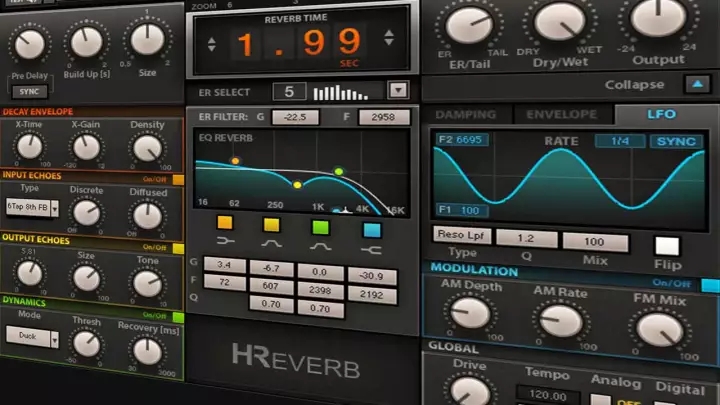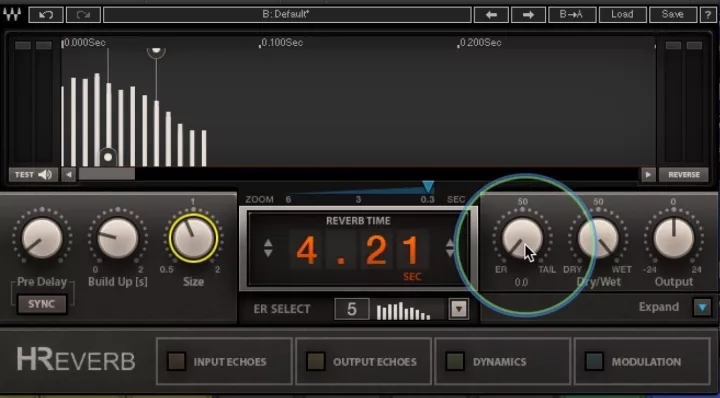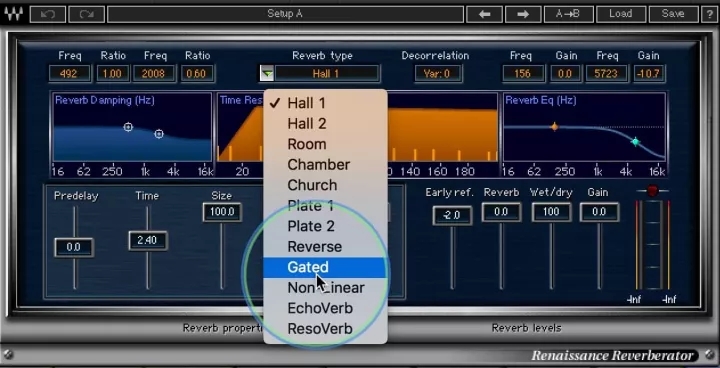
Whether it's a punk vibe or a dazzling electronic dance track, reverb is the secret ingredient in mixing. It's an essential part of any mix, whether you're aware of it or not. This article from Waves will guide you through the fundamentals of reverb and how to achieve professional-sounding results across different music genres.
1. Feeling vs. Hearing: Dry or Wet Reverb?
In any professional mix, you'll often notice that reverb is carefully applied to individual instruments or groups. There are generally two types of reverb: "dry reverb," which you feel, and "wet reverb," which you hear.
Dry reverb, such as short room reverbs, adds clarity and realism without muddying the mix—unless overused. It helps separate instruments and keeps the mix from sounding flat when using bus compression.
Wet reverb, like hall or plate reverb, adds depth, intensity, and creativity. It's typically used for main elements in the mix. Choosing the right sounds to apply big reverb to is crucial, otherwise your mix might become unclear or lose its emotional impact.
The key to using both types effectively is balance and blending.
2. Insert or Send/Return?
Inserting a reverb directly into a track is quick, but it limits your control over the dry and wet signals separately.
Most DAWs offer sends and auxiliary tracks, allowing you to route reverb to multiple sources and automate it easily. If you're unfamiliar with send/return setups, check your DAW's manual for detailed instructions.
3. Size Matters!
When setting up reverb, the first parameter to adjust is size. It defines the spatial dimension of the effect.
To determine the size, focus on the early reflections—the first echoes from walls, floors, or ceilings. Their timing and frequency response help listeners perceive the space.
Start by adjusting the Mix control to hear only early reflections. Increase the return level so you can clearly hear the changes. Then tweak the size until you get the desired spatial feel. Smaller sizes give a sense of presence, while larger ones add depth. H-Reverb and Renaissance Reverb both offer precise controls over early reflections, making them ideal for shaping the space.

Early reflection settings on H-Reverb
4. Reverb Time Based on Tempo and Rhythm
Generally, the reverb time depends on the tempo and rhythm of the track. Faster tempos usually require shorter reverb times, while slower tempos benefit from longer reverb.
There are exceptions, especially with certain parts of a song. For example, if a vocal has long sustained notes, you can use a longer reverb. Conversely, if a vocal line is rhythmic in a slow song, shorter reverb is better to avoid blurring the sound or the overall mix.
5. Natural Sound or Creative Effect?
Each type of reverb has its own character, whether natural or artificial. This is important when choosing the right one for your mix.
Natural reverb, like the Waves IR1 Convolution Reverb, simulates real acoustic spaces and is easy to set up. Room reverbs are best for small spaces, while church or lobby reverbs work well for larger areas. These mimic real-life acoustics.
Non-natural reverbs, such as nonlinear or inverted reverb, are great for creative effects. They can add energy or texture to a sound. Mechanical reverbs like springs or plates also offer unique qualities, helping to shape the sonic landscape.
The rule of thumb is to choose a reverb that contrasts with the sound. For example, using non-linear reverb on drums makes them more dynamic, while smoother reverb on a piano gives it a more controlled feel.

Digital reverbs like Renaissance Reverb allow selection of specific reverb types
6. Pre-delay and Dry/Wet Balance
Pre-delay is a crucial factor in achieving good reverb. It’s the time between the dry signal and the start of the reverb. The longer the pre-delay, the deeper the reverb feels. A shorter pre-delay brings the wet reverb closer to the dry signal, while the dry/wet balance determines how much of the original sound remains.
To set pre-delay, consider the space you’re trying to simulate. 0–10ms for small rooms, 10–20ms for medium spaces, and over 20ms for large halls or churches. Remember, these settings also depend on the tempo and density of the track, so it’s best to adjust them globally rather than per track.
7. Diffusion, Density, and Damping
Diffusion and density refer to the number of reflections in a given time. More reflections mean a denser reverb field, while fewer reflections create a more open sound. High density can make weak sounds fuller, while low density works better for large spaces.
Damping controls how quickly reverb decays at different frequencies. High frequencies tend to decay faster unless the room has hard surfaces like stone or glass.
Combining diffusion and damping is a common technique. For example, a short room reverb with high density and high-frequency damping can make a snare or vocal sound full. Adjusting damping to reduce low-frequency reverb while increasing high-frequency reverb can add character to a dull sound.
8. Overall Reverb Control
Adding perfect reverb to a single track is one thing, but creating a cohesive reverb effect across the entire mix is another challenge. With a smart approach, this becomes manageable.
Strategy 1: Differentiate Reverb Types. Use a unique reverb for the lead vocal, such as a hall reverb, and avoid applying the same to other elements. This keeps the vocal distinct and focused.
Strategy 2: Use One Reverb Type. For a cohesive, live feel, apply the same reverb to all tracks. This creates a unified space and avoids conflicting reverb information. You can experiment with different buses under similar settings to tailor the reverb to each section.
Strategy 3: Efficient Reverb Setup. Use compact reverb settings for rhythmic instruments, and keep reverb time as short as possible. This helps maintain clarity and power in your mix.
Thick VGA to VGA monitor cable connects PC or laptop to projector, SVGA monitor and other display system with 15 pin VGA port
50 ft extra long VGA cable extends your operating distance and makes devices' movement conveniently (15 meters)
Heavy duty VGA display cord is well built with Al-foil shielded layer and dual ferrite beads to protect against EMI and RFI interference for high quality video signal transmission
Nickel plated connectors (male to male interface) and copper conductors enhance this sturdy cable performance (resolution up to Full HD 1080p - 1920 x 1080)
Black computer monitor VGA cable for desktop with thumbscrews to make plugging and unplugging a breeze while ensure easy secure connections.
Projector Cable,Projector Cord,Projector Wire,Projector To Laptop Cable
UCOAX , https://www.ucoax.com